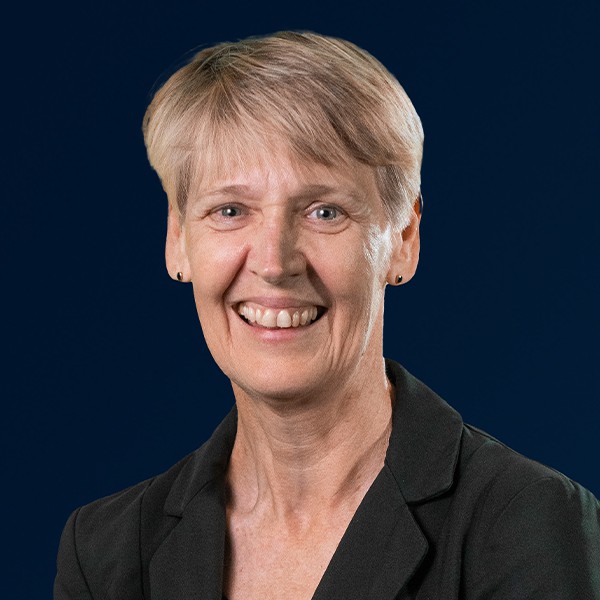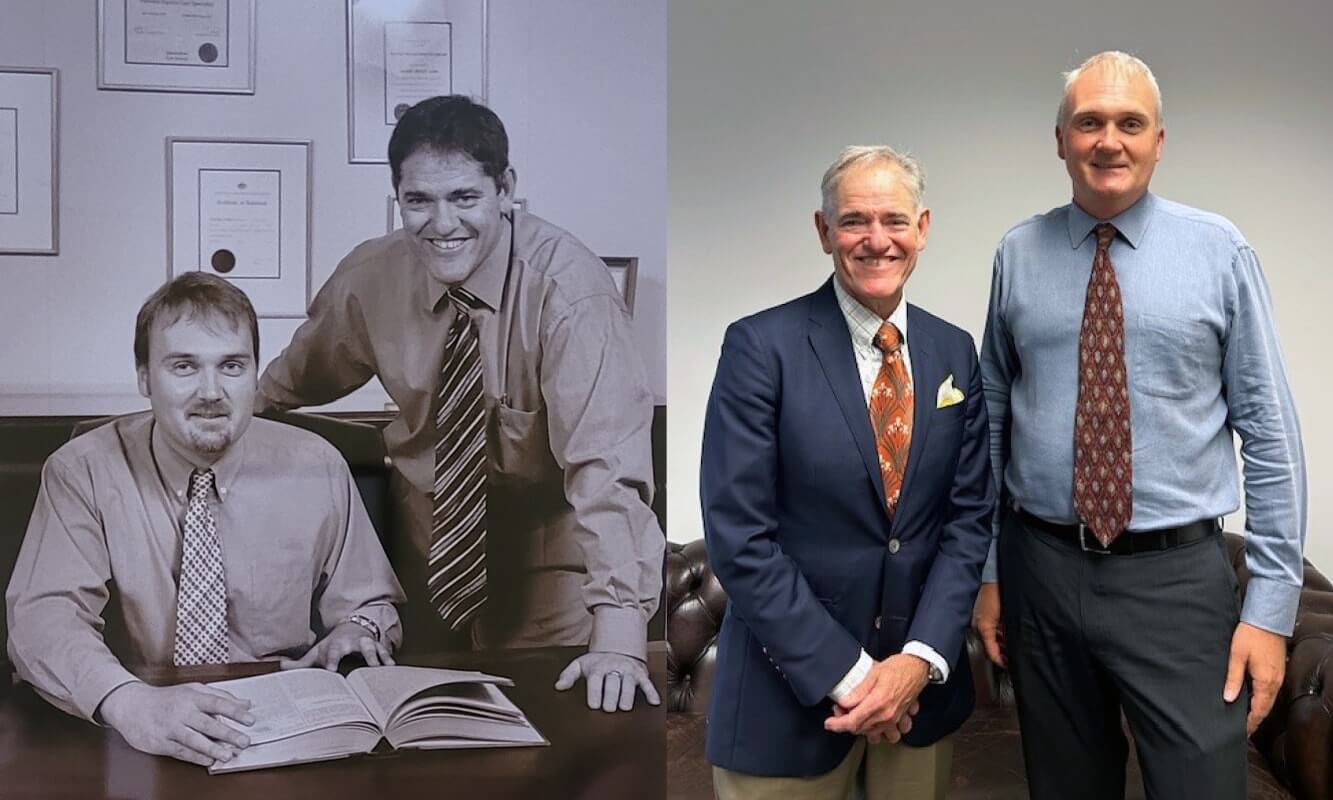Morton & Morton Partners Adrian Land and Andrew List both say they “fell into law”, but they haven’t taken a misstep, with the Fraser Coast firm celebrating 150 years this month.
And they both found the law in different ways. Adrian’s father was a Police Sergeant who advised his indecisive son that “you can’t go wrong being a lawyer”, while Andrew tried work experience in year 12 at a different law firm in Maryborough.
“At the end of the week, the partner said ‘if you want to do articles at the end of year, give us a ring’. So I got accepted into the law, and started my articles in the January and have been doing it ever since,” Andrew said.
Firm founder Thomas Morton also had an interesting path to the law. In 1868 he arrived in Maryborough after working as a jackeroo. He started employment as a clerk to an English solicitor C.H. Steadman who had been practising in the town since 1861.
On 9 March 1869, Thomas Morton became articled clerk to William Barns of Maryborough for five years. In 1872 Barns assigned the articles to William Morgan, a solicitor practising at Mount Perry.
On 20 March 1874, Thomas was admitted and enrolled as Attorney, Solicitor and Proctor of the Supreme Court of Queensland. Family tradition has it that he proceeded to Brisbane on horseback to take his final examinations.
Following Thomas’s admission, the partnership firm of Morgan & Morton came into being. William Morgan practised from the firm’s office in Mount Perry while Thomas Morton established another office in Maryborough. Bank of New South Wales records show the partner’s specimen signatures were registered by the bank on 20 April 1874. The firm’s Maryborough office was in Bazaar Street.
The admission of Thomas Morton.
Adrian said he was very proud of the firm’s 150-year milestone, not so much for himself but for the staff and the history of the firm.
He said long-serving staff, including his secretary Theresa Deem who had been at the firm for 40 years, provided stability and continuity for the firm and there was a loyal client base.
Adrian became a Partner in 1993.
“It has been a mainstay of Maryborough and I am very proud to be part of that,” Adrian said. “And I’ve been here now for 32-odd years which is a substantial slab of that 150 years.”
He believes the firm’s longevity is in “large part” to the fact that Bob and Jack (partners in the 1930s Robert Stuart Stephenson and Marcus Jack Boge) took over from the original partners and their sons took over from them.
“There’s a generational holding, and the four of them were heavily involved in the community in different ways. It was their life here and all had established a life here,” Adrian said.
“You had a lifetime of Bob and Jack, then a lifetime of John and Donald, and now you get a lifetime of me and Andrew.”
Andrew became a Partner in 2001.
And how does the 150-year milestone feel for Andrew, a Maryborough local?
“Some days I feel every day of it,” he laughed, saying the firm existed a few years before the Maryborough Supreme Court building was even built.
“So it does give you a bit of perspective on the firm’s history.”
And Andrew he has come to appreciate the connection with clients in the area over the years.
An old photo of the current Wharf St building.
“For the vast majority of our clients, Morton & Morton are their family lawyers and whatever problem comes up, they go and see Morton & Morton,” he said. “We have always served their family well over the generations.
“We get on with doing the job and realise clients appreciate it because you can see the relief when you have discussed their issue with them and reduced their stress, and given them peace of mind.”
And clients show their appreciation in many ways, such as cards, boxes of chocolates and bottles of Scotch. Thank-you gifts are sometimes dropped off at Andrew’s office every Christmas, even when clients haven’t had matters handled that year or even that decade.
The Wharf Street office has changed over the years.
“That shows they really appreciate what you did for them, and that’s one of the advantages in a regional practice you develop those long-standing, solicitor-client relationships,” he said.
“It’s less the transactional where you might see a client do one thing and never hear from them again. It tends to become a long-standing relationship.
“It’s 28 years since I started with Morton & Morton; even in that period, I have acted for different generations of the same family.”
Both agree working in a regional firm has many benefits, allowing lawyers to have a great balance of career and lifestyle, with exposure to many areas of law while only having a short drive or walk to work.
“You get to be in control of your own destiny in the regions and another of the other benefits … is that you do form great relationships with staff members,” Adrian said.
Hugh Morton, son of the founder.
Firm history
By 1876 the new firm, Corser & Morton, was in existence following the return of William Morgan to England. Henry Corser had been admitted in 1874 and by 1878 the firm had moved to a new address in Kent Street and, later in 1884, it moved to the address in Wharf Street, which has since continuously been the firm’s address and its successors in practice.
In 1884/85, Henry Corser and Thomas Morton went their separate ways and Thomas Morton acquired a new partner in Charles Powers. This partnership continued for 10 years. Charles had been admitted as a solicitor in 1876. He had a active public life, entering Queensland parliament as Member for Burrum in 1888 and later becoming a Member for Maryborough in 1893. He went on to be the first Commonwealth Crown Solicitor and a Justice of the High Court.
In 1881, Henry Nairn Thorburn of Bundaberg started his articled clerkship with Charles Powers and in 1885 James Nicol Robinson also commenced his articled clerkship.
Subsequently, two branch offices of Morton & Powers were opened in Bundaberg and Brisbane. After admission, Henry Thorburn took charge of the Bundaberg branch which later became a separate entity, Powers & Thorburn. When James Robinson was admitted in 1890, he joined the Brisbane Branch office which later became Powers & Robinson.
During the period of his partnership with Charles Powers, Thomas Morton had taken on four articled clerks: T.P Barrymore, who subsequently practiced in Western Australia; Leland Edwin Challands, who later established a practice in Ingham; Hubert Ernest Harrington, who later became a member of the then Maryborough firm Stafford & Harrington before being admitted to the bar; and Frederick Barker Sykes, who practiced in Gympie following his admission.
After his partnership with Charles Powers was ended, Thomas Morton practised on his own account for five years. During this period he took on as articled clerk Herbert Baker Bushnell who, after admission, engaged in both professional and commercial pursuits in various parts of Queensland.
On 16 August 1900, Thomas Morton entered into partnership with Clement Gordon who had been articled to solicitor Henry Corser of Maryborough and admitted on 9 May 1899. The partnership was known as Morton & Gordon and the term of the partnership was to be five years. On 28 May 1901 the partnership agreement was varied to provide for the opening of a branch office at Nanango. The Nanango office was operated by Clement Gordon and the Maryborough office was supervised by Thomas Morton.
On 5 August 1902, Thomas Morton took on as articled clerk his son Hugh Gilbert Stuart Morton, who was later admitted as a solicitor, and on 1 May 1908 introduced as a partner of the firm, which then became Morton Gordon & Morton. The partnership continued until 15 July 1918 when the partnership was terminated and Clement Gordon took over the Nanango and Kingaroy offices. The Maryborough office was taken over by Thomas Morton and his son who then practised under the name Morton & Morton, the name that the firm continues to use today.
Thomas Morton died on 21 July 1929 aged 83 and, at that time, the senior practising solicitor in Queensland. On 16 June 1926 Hugh Morton acquired the premises occupied by the firm. After the passing of his father, he continued to carry on the practice of Morton & Morton until he died on 28 January 1936.
The practice was then bought by Robert Stuart Stephenson and Marcus Jack Boge, who continued to use the firm name Morton & Morton. The current partners, Adrian Land and Andrew List, started their partnership on 1 July 2001 taking over from Donald Stephenson and John Boge. Adrian was a partner with them from 1993 to 2001. Andrew started as a solicitor with the firm in 1996 and became partner in 2001.














Share this article